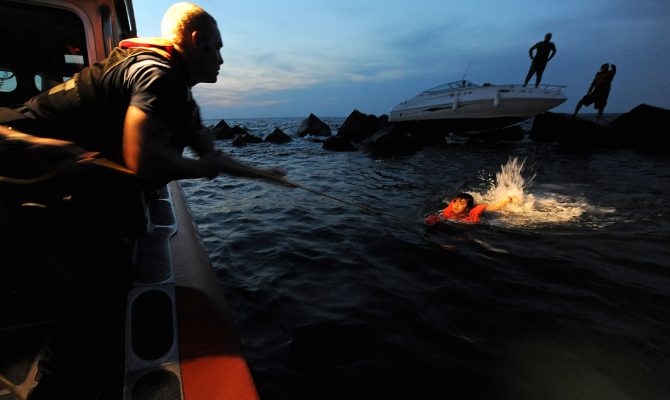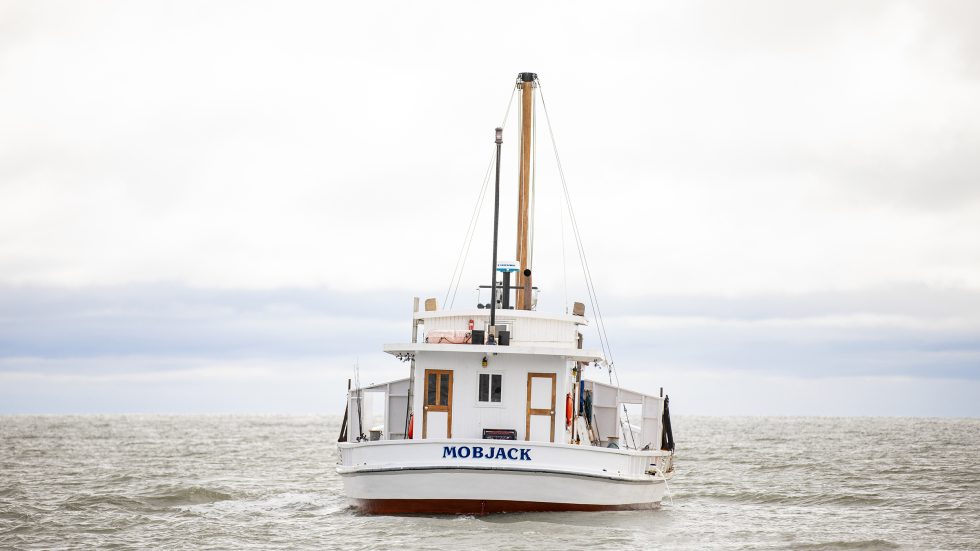Therefore, any abandon ship discussion must first consider prevention. We’re talking common sense: regular inspections of thru-hulls and touchy-feely of the associated tubing. This includes working the seacocks and eyeballing shafts, stuffing boxes, I/O plates and outboard brackets. These are the failures that cause boats to sink. Most of us know the critical components of our vessels; the fact that we go boating for pleasure does not diminish the need to regularly maintain the machinery or watch where we’re going.
Having said and done all that, if something happens and the boat is taking on water, burning or otherwise unsustainable and the skipper has made the decision to abandon ship…then what?
PFDs and Positioning
The goal is to guarantee the safety of all, get the word out as to what’s happening, prepare to leave the boat in a safe manner and ensure that once in the water or life raft (more on that later) we stand a good chance of survival.
The order in which we do the above depends on the particular emergency. For instance, making sure everyone aboard dons a PFD and transmitting a Mayday are musts. (Everyone was informed where the PFDs were stowed before leaving the dock, right?).
What good, however, would that Mayday do if we don’t know where we are? Every skipper should be prepared to transmit his/her position at any time, keeping in mind that whatever it was that caused the need to bail out might have also fried the electronics. This is an argument for keeping a log with regular position and course-made-good updates.
Are the pyrotechnics (flares, etc.) stowed where they can be accessed and up to date? It’s the law. A survey taken some years ago, however, found that 40 percent of boaters were not in compliance. Forget that you’re putting lives in danger and think of the fine in case of a boarding — a good possibility these days. The point is, many of the preparations for abandoning ship take place while the sun is still shining and everybody is smiling.
The Life Raft
Now, about that life raft. There are those in the bowrider and runabout set saying “Who, me?” We think of life rafts as large, canopied, double-bottomed devices best suited for yachts and offshore cruisers. But “life rafts” run the gamut from the above to light, suitcase-sized packages and hang-on-by-the-straps doughnuts that are often seen on inshore fishing vessels. Do the research; there are devices available for every type of vessel.
In my opinion a skipper is not practicing responsible boat handing if PFDs are the only life preservers on board. For one thing, something that all can clamber aboard or at least hang onto keeps everybody together. Non-survivors of a sinking are often those who’ve become separated from the others. A rescue is not instantly generated once the flare is launched or the Mayday broadcast. Even though we think it’s unlikely, we must be prepared to stay in the drink for who knows how long.
Which brings us to the “ditch bag.”
The long-legged cruiser often has a dedicated ditch bag with the essentials all ready to be tossed into the raft. For most of us, that isn’t practical. Generally, though, we do have aboard all that is needed. We just need to be able to collect it and toss it into the bag. One idea is to have a laminated, printed list of the essentials and their locations posted near the helm. The bag can be a sail bag of a size befitting your boat and passengers; fold it and stash it where it can be reached.
You should always be prepared to join my club, but do us all a favor and stay out of it.
Ditch Bag Essentials
Here’s what I believe are the bare necessities, plus whatever else you may think of:
- Bottled water (as much as practical)
- Energy bars and snack foods
- Prescription medication
- Petroleum jelly (Vaseline)
- Toilet paper (sealed in a Ziploc bag)
- First aid kit
- Flare kit
- Air horn canister
- Whistles
- Waterproof, hand-held VHF
- Personal locator beacon
- Digital waterproof watch
- Folding lock-back knife and or multi-tool
Author: Stu Reininger is a regular contributor to HeartLand Boating magazine




